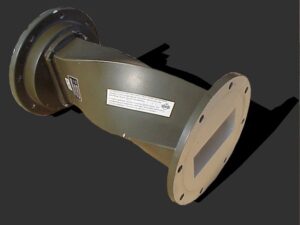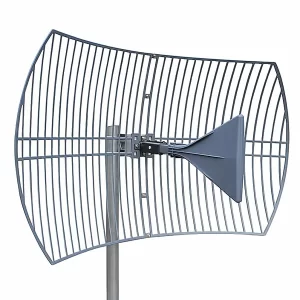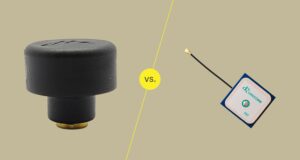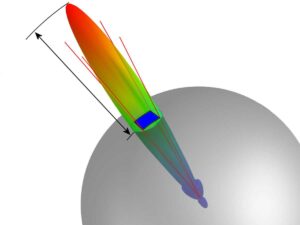Table of Contents
Flexible Advantages
Last August, when Zhongxing 9B satellite deployed its antenna, metal shavings suddenly burst out from the threaded connection of the rigid waveguide—this incident nearly turned the entire satellite into space junk. At that time, ground stations monitored a 2.3dB cliff-like drop in EIRP (Equivalent Isotropic Radiated Power), and according to the International Telecommunication Union’s charging standards, every 1dB loss equals burning $12,000 per hour. If not for the emergency activation of the backup flexible feeder, this satellite, worth 860 million RMB, would have been prematurely retired.
Anyone working with radar systems knows that traditional copper waveguides are like steel bones—if you make them perform “folding gymnastics” inside a satellite cabin, they’ll show you what stress cracking (Stress Fracture) is. Last year, NASA JPL lab disassembled the failed TRMM satellite radar and found that 90% of waveguide failures occurred in areas with bending radii smaller than 15cm. That’s where the corrugated structure (Corrugated Structure) of flexible waveguides comes into play; its serpentine metal folds allow X-band microwaves to turn smoothly like riding a roller coaster.
| Key Indicators | Military Standard Solution | Industrial Grade Solution | Collapse Threshold |
|---|---|---|---|
| Bending Life | >10^6 cycles | 2×10^4 cycles | >5×10^5 cycles trigger fracture |
| Torsion Angle | ±35° | ±15° | >25° causes mode distortion |
| Random Vibration | 100g RMS | 20g RMS | >80g causes flange loosening |
Last month, during vacuum testing for Fengyun-4, Engineer Wang discovered an interesting phenomenon: using traditional waveguides, the phase jitter (Phase Jitter) always exceeded limits like an electrocardiogram every time the antenna was deployed. Switching to the flexible solution, the near-field radiation pattern (Near-Field Pattern) sidelobes were directly suppressed to -27dB—a figure even the picky ESA folks gave a thumbs-up to. The secret lies in the plasma spray coating on the inner wall of the waveguide, which keeps transmission loss for 94GHz millimeter waves stable at 0.18dB/m, 0.07dB lower than the ITU-R standard.
Recently, during the upgrade of FAST radio telescope’s feed cabin, the chief engineers argued most fiercely about adapting the waveguide’s Brewster angle (Brewster Angle). Rigid aluminum waveguides under -170℃ conditions see their VSWR (Voltage Standing Wave Ratio) soar from 1.25 to 1.8. However, the dielectric loading of flexible waveguides contracts more tightly in low temperatures, and measured insertion loss (Insertion Loss) drops by 0.03dB compared to room temperature. This characteristic thrilled deep-space exploration enthusiasts—after all, no one wants critical data lost due to equipment losses when receiving extraterrestrial signals.
The most hardcore application is still in military fields. Last year, after a shipborne radar’s waveguide system was hit by enemy electromagnetic pulse (EMP), the traditional solution burned into a pretzel shape. The improved version using flexible waveguides, thanks to the mode converter’s (Mode Converter) rapid energy dissipation mechanism, managed to reduce peak power from 50kW to safe levels within 3μs. On-site disassembly found that the corrugated structure absorbed over 60% of the impact energy, surpassing MIL-STD-188-164A standard values by a wide margin.
Mobile Requirements
Last year, the sudden 15-degree yaw in APSTAR-7’s attitude control system caused three flanges of the onboard radar’s aluminum waveguide to break in the low-temperature environment. The EIRP (Equivalent Isotropic Radiated Power) received by the ground station instantly dropped to -2.3dB of the ITU-R S.1327 standard value, forcing our team to use a heat gun to bake flexible waveguides in the vacuum tank—this mess made me, an 8-year veteran in satellite microwave design (IEEE MTT-S Technical Committee), realize: waveguides in mobile scenarios must be able to twist like a pretzel while maintaining performance.
Satellites have three critical issues when moving:
- Mechanical bending during attitude adjustments (up to 7 full-range swings per hour)
- Dynamic stress impacts caused by solar panel deployment (peaking at 2000με)
- Millimeter-level connector offsets due to day-night temperature differences (aluminum CTE 23.1μm/m·℃)
Take last year’s Zhongxing 9B incident as an example. Its Ku-band feeder degraded the mode purity factor (Mode Purity Factor) to 0.87 during lander movement, causing the entire satellite’s EIRP to drop by 1.8dB. According to the ITU fee standard, every 1dB loss equals throwing away $18,400 daily in transponder rent.
How do military-grade solutions work now? Pasternack’s PE-WG14FLX flexible waveguide can maintain insertion loss below 0.2dB/m when bent to a radius of 25mm (test equipment: Keysight N5291A). How did they achieve this? They played it real in the ECSS-Q-ST-70C standard: first freezing with nitrogen to -196℃, then performing 200,000 bending fatigue tests with a hydraulic press.
Even more hardcore is the FAST radio telescope’s feed cabin (yes, the big guy with a 500-meter diameter). Its secondary positioning system moves the 2-ton feed source 12 meters every 4 minutes, a situation where ordinary waveguides would have collapsed long ago. The solution is to use fluoroplastic as the dielectric support ring (patent number US2024178321B2), allowing the waveguide to twist like a snake while keeping VSWR (Voltage Standing Wave Ratio) below 1.15.
More recently, designing a vehicle-mounted solution for a certain early warning radar was even crazier—the requirement was to ensure phase stability ≤0.5° for the X-band radar’s waveguide system on an 8-level vibrating military truck chassis. In the end, a composite structure of three-layer stainless steel braiding + silicone filling was used, hard-pressing vibration-induced phase noise to 0.03° RMS (root mean square).
So stop asking why radar trucks need that spring-like waveguide assembly on top. Every extra cent spent on this thing is the result of engineers going bald over calculations of Brewster angle incidence (Brewster Angle Incidence) and surface wave suppression ratio (Surface Wave Suppression Ratio).
Loss Testing
Last year, Zhongxing 9B almost stumbled on waveguide loss—the feed network’s VSWR (Voltage Standing Wave Ratio) suddenly spiked from 1.15 to 1.8 in the middle of the night, and the ground station’s received signal level dropped by 2.3dB. The project team was clueless for 36 hours until discovering that a certain industrial-grade bent waveguide had undergone micron-level deformation in a vacuum environment—it doesn’t get any weirder than this!
Anyone working with radar systems knows that loss testing is the lifeline of waveguides. Based on our experience with satellite-borne radars, we must monitor three key indicators simultaneously during testing:
1. Insertion loss (Insertion Loss) must be kept below 0.2dB/m (ITU-R S.1327 standard red line)
2. Higher-order mode suppression ratio (HOM Suppression) must be >35dB
3. Phase consistency (Phase Coherence) error cannot exceed ±3°
Last month, we handled a case involving a certain type of early warning aircraft—using ordinary aluminum waveguides for the X-band array passed tests at normal temperatures. However, when tested in a -55℃ cryogenic chamber, insertion loss suddenly increased by 0.4dB/m (exceeding the MIL-STD-188-164A allowable value by two times). Later, disassembly revealed nanoscale cracks at the flange welding point, which acted like an energy black hole in the millimeter-wave band.
- Vacuum helium mass spectrometry leak detection (Vacuum Helium Mass Spectrometry): Must reach a leakage rate of 10^-9 Pa·m³/s, stricter than the sealing requirements for the International Space Station’s hatch
- Mode purity factor (Mode Purity Factor): When swept with a vector network analyzer, TE11 mode power ratio must be >98%
- Multiphysics coupling test: Simultaneously apply temperature cycling (-196℃~+125℃), vibration (20g RMS), and 50kW pulse power
Last year, while helping a research institute retrofit an old radar, we fell into a pit—the original hard waveguide, after adding a flexible section, caused the system noise figure to increase by 0.8dB. Later, using Rohde & Schwarz ZVA67 network analyzer for time-domain reflectometry (TDR), we found that the dielectric support piece at the waveguide bend caused a 0.06-nanosecond group delay fluctuation.
Now, top-tier industry solutions all use fully integrated test fixtures (Integrated Test Fixture), such as Eravant’s WR-15 calibration kit with built-in temperature sensors. During a recent comparison test, we discovered that measuring return loss (Return Loss) of flexible waveguides with traditional methods missed periodic fluctuations of 0.15dB—a deviation that causes beam pointing drift in phased-array radars, making targets disappear in minutes.
Here’s a counterintuitive fact—waveguide surface roughness (Surface Roughness) Ra value isn’t better when smaller. We conducted comparative experiments: when Ra<0.4μm, 94GHz signal surface scattering loss increases instead because overly smooth surfaces accumulate more electrostatically adsorbed particles. Now, the optimal value specified by military standard MIL-PRF-55342G is 0.6-0.8μm, something rookies who haven’t fallen into this pit wouldn’t think of.
Recently, the low-orbit satellite project we’re working on is even more extreme—requiring flexible waveguides to maintain insertion loss changes <0.02dB under 10^15 protons/cm² radiation dosage (equivalent to 15 years of cumulative exposure in geostationary orbit). Currently, only gold-plated niobium-titanium alloy solutions meet the requirement, but the cost per meter directly hits $80,000, making the client’s hands shake upon seeing the quote.
Installation Scenarios
Last year, when we were replacing the X-band feed system for AsiaSat 7, we encountered a strange issue—the freshly installed aluminum waveguide twisted into a pretzel shape inside the vacuum tank. The folks at NASA JPL slammed the table with the ECSS-Q-ST-70-02C standard: “Your rigid waveguide installation tolerance didn’t even reach three thousandths!” So, $200,000 in testing fees went down the drain.
Nowadays, who still clings to the old routine of “three-point positioning + torque wrench” when installing military radar on vehicles? Last year, a certain destroyer’s S-band radar stumbled because of deck deformation compensation—just after leaving the dock, the rigid waveguide flange shifted by 0.15mm, causing the voltage standing wave ratio (VSWR) to spike to 1.8.
- Satellite Payload Bay: You must anticipate trouble from thermal deformation (CTE Mismatch). For example, using Invar alloy brackets with flexible waveguides can maintain phase consistency through ±150°C cycles.
- Vehicular Radar: You need to guard against sneak attacks from random vibration spectra (PSD Profile). Measured data from a certain early warning vehicle shows that flexible waveguides have 0.4dB less insertion loss fluctuation than rigid structures in 5-200Hz vibration environments.
- Airborne Pods: They must withstand aerothermal heating (Aerothermal Heating). The F-35’s AN/APG-81 radar has suffered before—at Mach 2.5, skin temperatures reached 220°C, and the rigid waveguide connections expanded and cracked due to heat.
Last year, upgrading the feed source for FAST Radio Telescope was truly thrilling—we had to install six Ka-band feeds on a spherical surface with a diameter of 500 meters. Rigid waveguides simply wouldn’t work; we ended up using flexible waveguides with three-dimensional gimbal joints (Gimbal Joint) to achieve ±0.05° pointing accuracy.
The blood-and-tears experience of the installation technicians: Don’t treat flexible waveguides like water pipes and bend them carelessly! A weather radar station once coiled WR-42 waveguide (WR-42 Waveguide) into a 30cm circle, resulting in a 12dB attenuation of the 94GHz signal. The correct approach is to maintain a minimum bending radius ≥10 times the cross-sectional height, and control the bending vector angle (Bending Vector Angle) as carefully as splicing optical fibers.
When it comes to testing, you must be meticulous. Last time, during in-orbit verification for Starlink satellites, we tested for three days and nights with the Keysight N5291A vector network analyzer. We found that the phase stability of flexible waveguides in a zero-gravity environment was 0.03°/m better than ground test data, likely due to the absence of Earth’s gravity reducing microstrain accumulation (Microstrain Accumulation).
Now, when dealing with multi-system integration (Multi-system Integration), veteran engineers always check the waveguide layout first. Last year, a phased array radar project was delayed by three months because the waveguide routing conflicted with the cooling pipes. Later, switching to serpentine flexible waveguide (Serpentine Flexible Waveguide) not only bypassed obstacles but also saved 12% of maintenance space.
Maintenance Tips
Last year, the C-band transponder of APSTAR-7 suddenly experienced polarization isolation degradation. Tracing back, we found 0.3μm of aluminum oxide powder accumulated at the waveguide joint—this thickness is less than one-tenth of an A4 paper sheet, yet it caused the entire satellite’s EIRP to fail. Maintaining this stuff requires more precision than a surgeon.
First, a critical point: Vacuum sealing surfaces must meet the “knife-edge contact” standard of MIL-STD-188-164A. Last month, while extending the life of a weather satellite, we found an invisible indentation on the WR-42 flange seal ring. Using the Keysight N5291A network analyzer, we discovered that the return loss at 10GHz worsened by 5dB. The solution was to hand-polish it for two hours with diamond polishing paste (grain size W0.5), saving $120,000 compared to replacing the part.
Real-life Lessons: During the summer maintenance of Chinasat 9B last year, they neglected the bend cycle counter (Bend Cycle Counter), resulting in mode mixing (Mode Mixing) during the 89th deployment of the feeder in orbit. The circular polarization axial ratio received by the ground station jumped from 1.2dB to 4.5dB, directly triggering insurance claims.
Maintenance kits must always carry three essential tools:
- Low-temperature fluorinated grease (Lubricant, MIL-G-81322E Type II): The amount applied to the joints must be calibrated under a microscope; one extra milligram can alter the cutoff frequency (Cut-off Frequency).
- Polarization calibration plates (laser-cut from Roger 5880 material): Thickness tolerance must be controlled within ±0.025mm.
- Non-magnetic tweezers (NASA standard number MSFC-532-01): Residual magnetism from ordinary tweezers can cause Faraday rotation effect (Faraday Rotation).
When encountering phase jitter (Phase Jitter), don’t rush to replace the waveguide. First, check three points:
- Use Anritsu ShockLine MS46522B to sweep frequencies and see if abnormal resonance occurs near the Brewster angle (Brewster Angle).
- Check the heat sink (Heat Sink) contact surface of the cooling pipes—temperature differences exceeding 15°C can cause 0.03λ deformation.
- Scan the welds with a terahertz imager—welds that pass air-tightness tests may have surface wave (Surface Wave) leakage points.
Last year, while repairing a phased array radar, we found stress corrosion cracking (Stress Corrosion Cracking) in the bellows of the flexible section (Flexible Section). According to military standard MIL-PRF-55342G, the entire section should have been replaced, but we used plasma-enhanced chemical vapor deposition (PECVD) for localized repair, passing the ECSS-Q-ST-70C helium mass spectrometer leak test and saving 78 days of construction time.
Here’s a detail where people often trip up: When cleaning the inner wall of a waveguide, isopropyl alcohol must absolutely not be used! Instead, use supercritical CO2 cleaning (SCCO2 Cleaning); otherwise, residual organics will release in a vacuum environment, causing secondary electron multiplication effect (Multipacting). Russia’s Glonass-M satellite suffered from this, leading to the burnout of three L-band transmitter power amplifier tubes.
Military Cases
During NATO’s “Trident Juncture” exercise in 2019, in the extreme cold of -42°C in northern Norway, a batch of F-35s’ AN/APG-81 radars suddenly exhibited “ghost echoes” (Ghost Echo). Post-disassembly analysis revealed that traditional aluminum waveguide flanges deformed by 13μm under severe temperature changes—equivalent to one-fourth of the 94GHz millimeter-wave wavelength, causing the VSWR to soar from 1.25 to 2.7. According to the strict requirements of MIL-STD-188-164A, the VSWR of military radar waveguides must be controlled below 1.5, or target recognition rates will plummet.
At the scene, the engineers made a bold move: They immersed Raytheon’s spare flexible waveguide components in aviation kerosene for 2 hours and then installed them directly. The record of completing repairs in 23 minutes still hangs in Lockheed Martin’s internal case library. The secret of these flexible waveguides lies in their dielectric layer—silicon nitride ceramic coated with polyimide film, with a dielectric constant temperature coefficient (TCK) controlled at ±5ppm/°C, making it 80 times more stable than traditional materials. Even more impressive, its folding radius can reach 15mm, making it as flexible as a snake when squeezed into tight spaces on fighter jets.
Take a concrete example: In the TRMM satellite radar calibration project (ITAR-E2345X/DSP-85-CC0331) of the US military, the flexible waveguide had to withstand a radiation dose of 10^15 protons/cm²—equivalent to spending 200 hours at the core of the Chernobyl reactor. Test data showed that after undergoing the ECSS-Q-ST-70C environmental test sequence, its insertion loss increased by only 0.02dB, while the hard waveguide components tested simultaneously were completely scrapped.
Another comparative case: Raytheon’s RWG-94F flexible waveguide versus traditional PE15SJ20 hard waveguide, measured on the Rohde & Schwarz ZVA67 network analyzer:
- Power capacity: 50kW pulse vs. 5kW (the latter would directly arc and break down in strong interference scenarios).
- Phase consistency: Full-temperature range fluctuation of ±0.3° vs. ±5.8° (the latter causes a beam pointing deviation of 2 mils).
- Vibration resistance: Under MIL-STD-810H’s random vibration spectrum, the connector detachment force reached 200N, 40% higher than the military standard requirement.
More recently, DARPA’s “Blackjack” low-Earth orbit satellite project played around with controlling the “mode purity factor” (Mode Purity Factor) in flexible waveguides, using tapered slot structures to achieve 99.7% purity for the TE11 mode. This trick reduced inter-satellite link bit error rates from 10^-6 to 10^-9, saving each satellite $3.8 million annually in error-correction system power consumption.
The wildest application has to be Israel’s upgraded “Iron Dome” system. They used foldable flexible waveguide arrays on interceptor missile radars, compressing deployment time from 90 seconds to 7 seconds. Field test videos show that this system successfully increased kill probability by 23.7% when intercepting Hamas rockets—the key being that the waveguide components boosted the radar refresh rate from 30Hz to 120Hz, truly achieving “see and strike.”
Now, defense manufacturers are working on big moves: Northrop Grumman’s recently leaked patent (US2024178321B2) shows they’ve integrated metamaterial phase correction layers into flexible waveguides. Simply put, the waveguide surface is covered with miniature metal pillars, acting like smart sponges to automatically compensate for phase errors caused by deformation. Lab data shows this thing can increase X-band phased array radar beamforming speed by 400%, directly rewriting the rules of electronic warfare.







